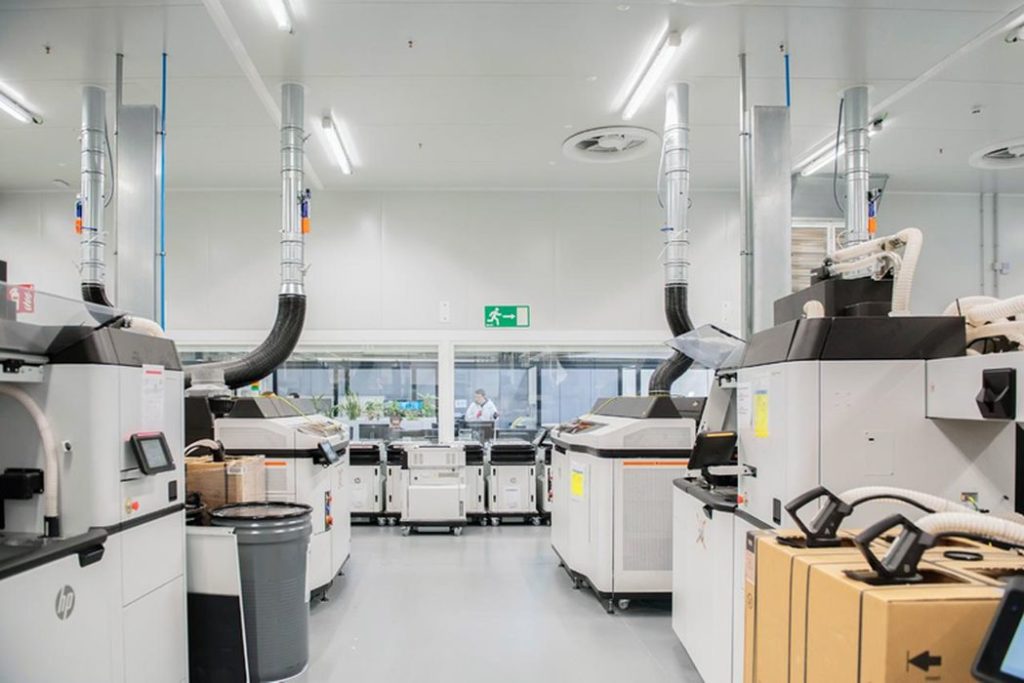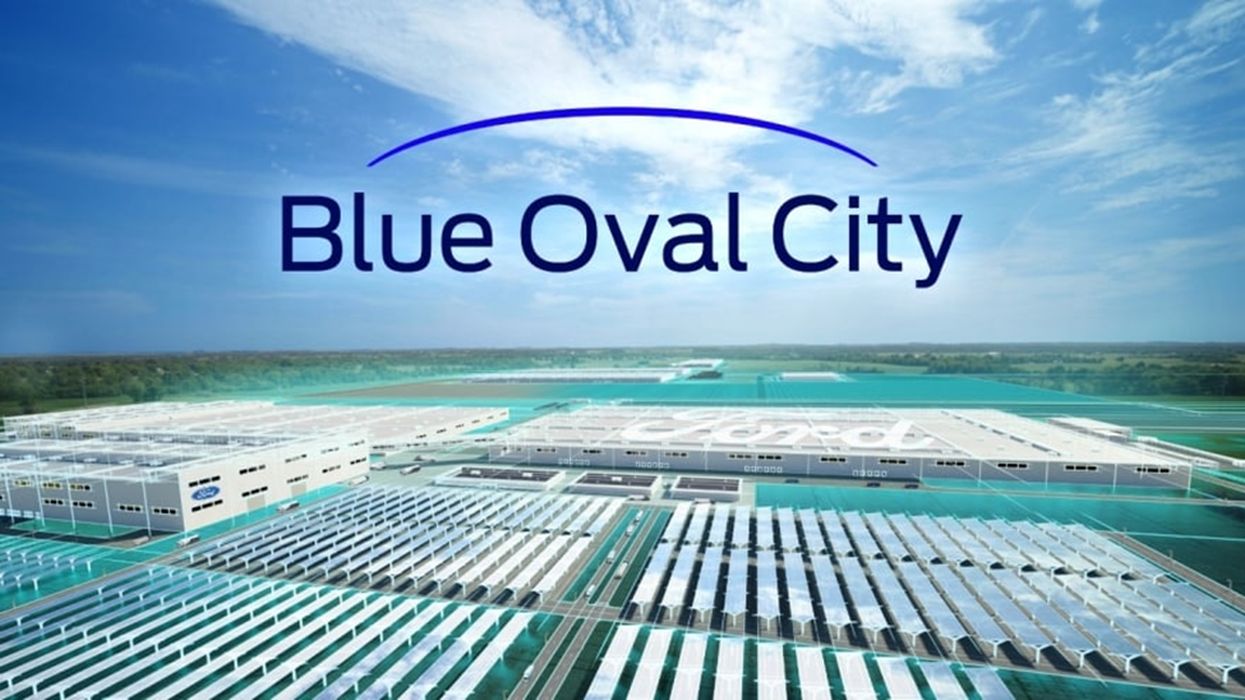
Charles R. Goulding and Randall Rothbort look at how 3D printing technology could fit within several initiatives to set up major EV manufacturing centers.
On September 27th, Ford Motor Company announced a plan to shift their electric vehicle production to a new campus in Tennessee (as well as Kentucky). This was accompanied by a proposed investment of over $11.4 billion, with an estimated 11,000 jobs to assist their growing EV production. This investment is the largest single investment made by an automotive manufacturer into EV production in the United States.
With the recent release of the fully electric Mustang Mach 1 and the unveiling of the F-150 Lightning, Ford is clearly pushing their focus towards renewable energy, advanced batteries, and innovative vehicles in general.
This new facility, known as Blue Oval City, will continue its push to innovate and improve its vehicles with a focus on sustainability and reduced emissions. With this move comes the improvement of their manufacturing processes, both for their vehicles as well as the development and manufacture of improved batteries. All of this comes together to push forward Ford’s goal of a fully zero-emission line of vehicles.
The New Auto Alley
As companies such as Ford continue investing in American manufacturing, there has been a growing development of a new automobile manufacturing sector, highlighted by this investment into Tennessee. The Tennessee Valley Authority (TVA) has pushed to expand electric vehicle manufacturing and support systems, which is discussed in our article “3D Printing For The Two-Way Electric Smart Grid”.
This effort by Tennessee is not unique to the state. Other states as well, such as Kentucky and Alabama, have sought to attract manufacturers and make significant investments. This is due to the electricity savings in these states: Michigan has a cost of 7.2 cents per kilowatt-hour, while Kentucky and Tennessee average 5.3 cents per kilowatt-hour.
This has led to the development of a new “Auto Alley” that is set to support the growing need to manufacture electric vehicles. The U.S. South alone is projected to produce 45% of EVs. Other companies, such as Nissan and Volkswagen, have made moves to invest in similar manufacturing centers, but none at the scale of Ford’s Blue Oval City.
Innovative New Campuses

Ford 3D Printing Lab [Source: arstechnica.com]
Ford sees their Blue Oval City campuses as the main driver to improving its capability of producing fully electric vehicles at scale. While Ford has extensive manufacturing capabilities, these existing manufacturing complexes are not just dated, but also designed for the manufacturing of older vehicles, and are not particularly well suited for the development of electric vehicles.
Other investments, such as their $1.5 billion invested into Canadian manufacturing plants (as discussed in “3D Printing And Ford’s $1.5 Billion Canadian Investment”), seek to accomplish similar goals of expanding EV capabilities.
Car manufacturers look to vastly improve their production efficiency to support the production of EVs. However, many companies look to outsource batteries for their vehicles. Ford sees Blue Oval City as an investment into battery production as well. The Blue Oval SK battery plant was designed to support the supply of components, manufacture of batteries, as well as recycling of key material. To be constructed in central Kentucky, Ford designed the site to be carbon neutral with zero waste to landfill once it is fully operational.
Both the production of electric vehicles and batteries requires a variety of unique and innovative manufacturing processes, a significant one being additive manufacturing. With their goal of reducing waste, 3D printing offers Ford a unique way to both reuse and produce new parts.
Plastic waste for many of their 3D printed components is now repurposed into small plastic pellets, which are most often used for injection molding machines. Ford particularly uses this for their fuel clip development, among various other components. This has led to significant production improvements, making the clips 10% cheaper (as well as 7% lighter due to the new material).
Sand printing, FFF and SLS have all been incorporated in order to develop hand tools, work holding equipment (jigs), and other fixtures used throughout Ford’s manufacturing process (as discussed in our article “Ford vs. Ferrari: Using 3D Printing”). Ford has even used 3D printing for additional products, such as their Mach-E horse figures given to all first edition customers. Ford has produced well over 500,000 parts using 3D printing processes. Innovative manufacturing technologies like this will be front and center at the new Blue Oval City production campus.
The Research & Development Tax Credit
The now permanent Research and Development (R&D) Tax Credit is available for companies developing new or improved products, processes and/or software.
3D printing can help boost a company’s R&D Tax Credits. Wages for technical employees creating, testing, and revising 3D printed prototypes can be included as a percentage of eligible time spent for the R&D Tax Credit. Similarly, when used as a method of improving a process, time spent integrating 3D printing hardware and software counts as an eligible activity. Lastly, when used for modeling and preproduction, the costs of filaments consumed during the development process may also be recovered.
Whether it is used for creating and testing prototypes or for final production, 3D printing is a great indicator that R&D Credit eligible activities are taking place. Companies implementing this technology at any point should consider taking advantage of R&D Tax Credits.
Conclusion
As Ford Motor Company continues to expand its electric vehicle economic development, its new Blue Oval City will allow them to vastly improve the company’s capabilities. By tapping into the resources of states like Tennessee and Kentucky, Ford will be able to grow its EV footprint, allow for more innovative manufacturing methods, and drastically improve its output of both batteries and EVs.
This, in turn, will help to turn this region of the country into a center of zero-emissions innovation, with surges of jobs as more companies follow suit. This will be an interesting development to watch, not only for the auto industry, but all manufacturing industries, such as 3D printing.

